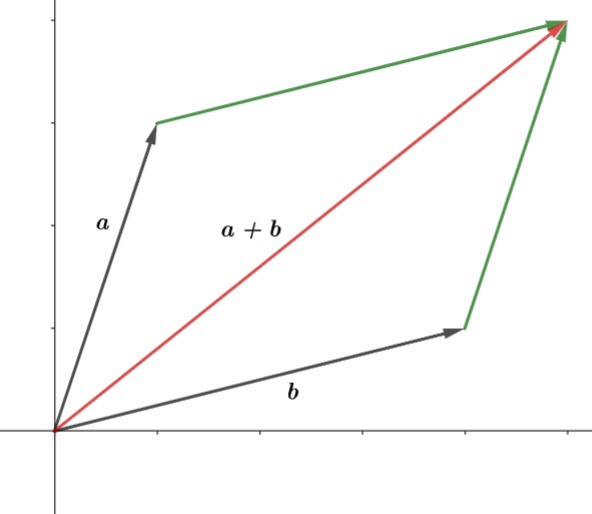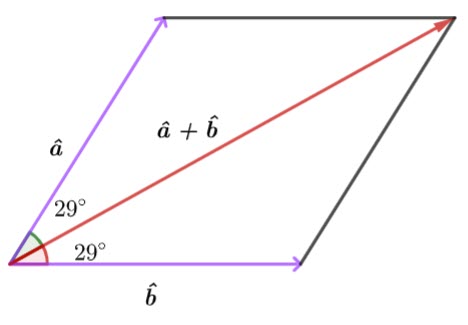Points
and
are defined by the position vectors
and
.
Find a vector that bisects
.
If we think about how we add vectors using the parallelogram rule

we can take advantage of the geometric properties of parallelograms (or of a rhombus).
If ![]() and
and ![]() are unit vectors, then the parallelogram is a rhombus, and the diagonal (i.e the resultant) bisects the angle.
are unit vectors, then the parallelogram is a rhombus, and the diagonal (i.e the resultant) bisects the angle.

We need to find the sum of the unit vectors.
![]()
![]()
![]()
![]()
The vector that bisects ![]() is
is
![]()
